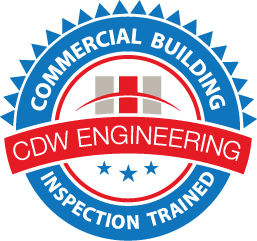Home Inspections in Connecticut > Blog > January Blog
January Blog
As we move into the colder months there are some safety issues that are important to keep in mind. This month I am writing about Carbon Monoxide. Please do read this whole article.
What Is Carbon Monoxide Poisoning?
Entirely odorless, colorless and impossible to detect on your own without any kind of aid, carbon monoxide is one of the most lethal gases found in households. Without a telltale sign, it can easily make its way into your home unnoticed. More than 400 people die from unintentional carbon monoxide poisoning annually. These numbers rise in the winter when people have their stoves, heaters and generators cranked up as high as they can go, making the colder season a particularly high-risk time of year.
What Are the Symptoms of Carbon Monoxide Poisoning?
The low-level symptoms of carbon monoxide poisoning are quite similar to common flu symptoms, although there is typically no fever present with carbon monoxide poisoning. This is yet another reason carbon monoxide poisoning is so dangerous. Because it’s more likely to occur during the winter, which is also flu season, sufferers are likely to brush off their symptoms. They may assume they’re just suffering from the flu and will be better in a week or so. If you or anyone you know begins to display these signs and symptoms, don’t assume it’s a case of the flu. Take the necessary steps and find out for sure. If it’s really just the flu, it won’t hurt, and if it turns out to be carbon monoxide poisoning, it might just save a life. Low to moderate levels of exposure to carbon monoxide cause symptoms such as:
- Shortness of breath
- Dizziness
- Nausea
- Fatigue
- Headaches
With severe exposure to carbon monoxide, the symptoms will be much more intense, and may also include:
- Vomiting
- Loss of muscular coordination
- Mental confusion
- Loss of consciousness
- Eventual death
Two different factors determine the severity of symptoms among people with carbon monoxide exposure. The first factor is how concentrated the carbon monoxide is at exposure. If it is a very small leak, releasing only the smallest amounts of carbon monoxide into the air, the symptoms will not be extremely severe, and vice versa. If the concentration of carbon monoxide is extremely strong, it’s entirely possible the victim will skip over the milder symptoms, progressing straight to the loss of muscle control, confusion and loss of consciousness before ever realizing there is a problem. The second factor is the duration of exposure. The longer the victim is exposed to carbon monoxide, the worse the symptoms will be, and the higher the likelihood that death will occur. If you suspect you or a family member may be feeling the effects of carbon monoxide poisoning, move outside and into the fresh air as fast as possible. As soon as you are outside, call 911.
Where Does Carbon Monoxide Come From in Your Home?
If carbon monoxide is such a harmful gas, you might wonder where in the world it comes from, and how it can find its way into your home. You might be surprised to know such a toxic gas can come from the most innocent and ordinary of sources. The general rule is any home appliance or piece of equipment that burns wood, propane, natural gas, oil, charcoal or coal is potentially a source of carbon monoxide in your home.
To prevent carbon monoxide leaks I also recommend using these appliances and pieces of equipment only as directed by the manufacturer. All manufacturers provide guidelines for how to operate your appliances correctly, with a minimal amount of risk. Appliances and pieces of equipment that have the potential to introduce carbon monoxide into your home are:
- Boilers
- Furnaces
- Fireplaces
- Water heaters
- Ovens and ranges
- Space heaters
- Wood-burning stoves
- Backup generators
- Propane and charcoal grills
- Cars and other automobiles
- Gas-powered lawn mowers
The odds are good that you own and regularly operate at least a few of the items on this list. Therefore, no matter how safe your home is otherwise, you are potentially at risk for carbon monoxide poisoning. With something as dangerous as this, it’s never safe to assume, “It won’t happen to me.” Take the initiative to have these appliances inspected for safety. Make sure to install these items correctly, and only use them as intended.
How Can You Prevent Carbon Monoxide Poisoning?
- Install Carbon Monoxide Monitors
Without a doubt, this is the single most important step you can take when it comes to preventing carbon monoxide poisoning, aside from being cautious to use your appliances correctly. However, it isn’t quite as simple as just buying a few detectors and installing them in random locations around the house. To be as effective as possible, there are a few key locations where you should install your carbon monoxide detectors. To create the best safety net, follow these guidelines on where to install your detectors.
- On every floor of your home, so you can hear the alarm no matter where you are
- Directly outside your sleeping areas, so no one sleeps through the alarm
- Near appliances that are potential hazards, but no closer than 15 feet. Otherwise, they may cause false alarms.
- On ceilings, since the hot air carrying the gas will rise
- Far from drafty areas such as windows, vents and air registers
- Far from bathrooms where steam and heat could cause false alarms
- Nowhere that receives direct sunlight, which can cause false alarms
- Test Your Carbon Monoxide Monitor System
It isn’t enough to just buy the detectors and install them. After all, they’re no good to you unless they work properly. Once they’re installed, you should test them to make sure they’re working correctly, and test them on a regular schedule.
- Clean Your Gas Dryer Filter
. If your home has a gas dryer, the lint that collects in the filter could raise the risk of carbon monoxide leaking into your home. Not only does all that lint pose a fire hazard, but it also blocks the vent, meaning the carbon monoxide produced in the machine has nowhere to go. Instead of being safely filtered away in the vent, it’s forced out into your living space. Thankfully, this is an easy fix. Clean the lint out of your filter regularly, and you shouldn’t have any problems.
- Limit Your Exposure to Carbon Monoxide
One of the best ways you can reduce your risk of carbon monoxide poisoning is to reduce your exposure to it altogether. To do this, you can install UL-listed appliances that have been specifically rated for safe performance. You can also take the precaution of never running combustion appliances such as charcoal grills inside your home and never allow your car or lawn mower to idle inside your garage, even if the door is open. For extra protection in your home, seal the wall between your house and garage so no fumes from the garage can find their way inside your house.
- Run Drills and Develop an Emergency Plan With Your Family
To ensure your family knows what to do if the carbon monoxide alarm goes off, you should sit down and work out your emergency plan. Once the plan is set, it’s a good idea to run through this plan a few times, so everyone is sure of what to do if an emergency does happen. Your emergency drill should include things like the importance of getting outside as soon as possible, as well as establishing a designated meeting place somewhere outside where everyone can gather for a headcount.
- Get Your Appliances Serviced Regularly
We mentioned this earlier, but it’s so important it’s worth repeating in this section as well. You must get any appliance that is a potential source of carbon monoxide cleaned, inspected and serviced at least once a year. Hire a professional to do this, or do it yourself if you have the necessary experience. These tasks include things like cleaning the chimney, clearing out vents that may be blocked and other similar jobs.
As always, I welcome your comments and questions at info@wolffhomeinspections.com.




